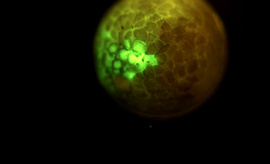Telomerase Activation and ATRX Mutations Are Independent Risk Factors for Metastatic Pheochromocytoma and Paraganglioma
Abstract
Purpose:
Pheochromocytomas and paragangliomas (PPGLs) are rare neuroendocrine tumors. Whereas most PPGLs are benign, up to 20% may become metastatic with SDHB- and FH-mutated tumors showing the higher risk. We aimed at determining the contribution of immortalization mechanisms to metastatic progression.
Experimental Design: Immortalization mechanisms were investigated in 200 tumors. To identify telomerase (+) tumors, we analyzed genomic alterations leading to transcriptional activation of TERT comprising promoter mutations, hypermethylation and gain copy number. To identify tumors that activated the alternative lengthening of telomere (ALT) mechanism, we combined analyses of telomere length by slot blot, telomere heterogeneity by telomere FISH, and ATRX mutations by next-generation sequencing. Univariate/multivariate and metastasis-free survival (MFS) and overall survival (OS) analyses were carried out for assessment of risk factors and clinical outcomes.
Results:
Only 37 of 200 (18.5%) tumors achieved immortalization. Telomerase activation occurred in 12 metastatic tumors and was prevalent in SDHB-mutated paragangliomas (P = 2.42e−09). ALT features were present in 25 tumors, mostly pheochromocytomas, regardless of metastatic status or molecular group (P = 0.169), yet ATRX mutations were found preferentially in SDHB/FH-mutated metastatic tumors (P = 0.0014). Telomerase activation and ATRX mutations were independent factors of poor prognosis: MFS (hazard ratio, 48.2 and 33.1; P = 6.50E−07 and 1.90E−07, respectively); OS (hazard ratio, 97.4 and 44.1; P = 4.30E−03 and 2.00E−03, respectively) and were associated with worse MFS and OS (log-rank tests P < 0.0001).
Conclusions:
Assessment of telomerase activation and ATRX mutations could be used to identify metastatic PPGLs, particularly in tumors at high risk of progression.




